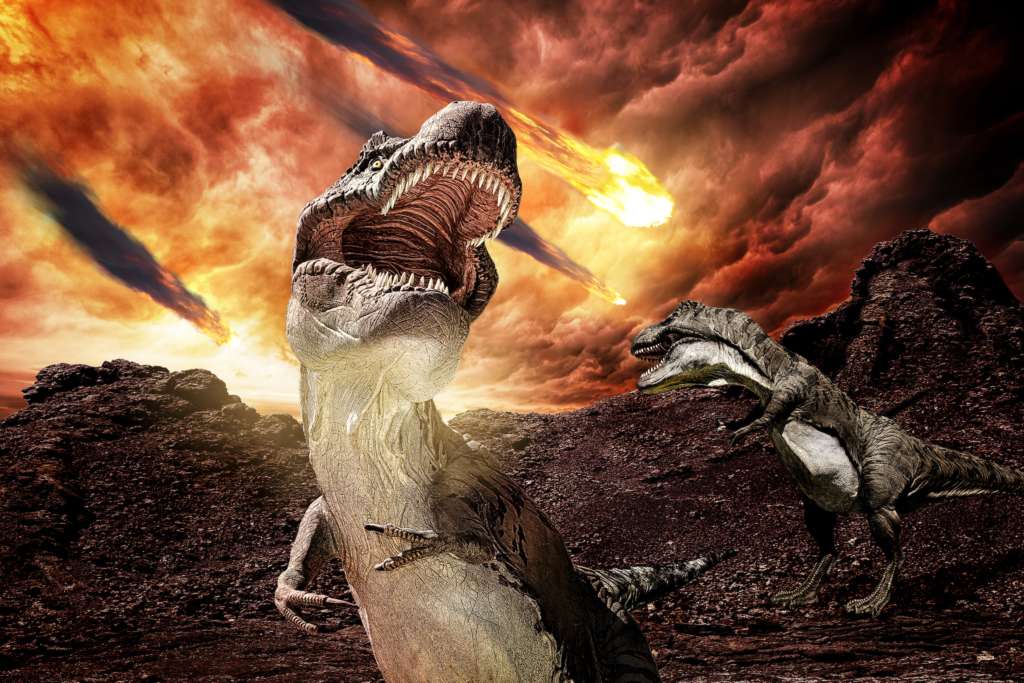The Cambridge Dictionary translates the German word Augenblicke as “moments, seconds, flashes, instants, jiffies, ticks.” It is also translated as a “glance” or a “blink of the eye,” so it runs the range of being a fraction of a second (an average blink of a human eye lasts 1/10 of a second) to several seconds in the case of a casual glance.
But a lot can happen in that time frame. Consider, for example . . .
The Big Bang happened in a fraction of an augenblick

The universe was created in an Augenblicke. I’m referring to the Big Bang where God created the universe ex nihilo (out of nothing.) In the first second of time, the universe inflated (expanded) from an anomaly (perhaps a gravitational singularity) about the size of a peach to what it is today, and our universe is still expanding, though at some point it may likely collapse. The four fundamental forces (gravity, electromagnetism, the strong force and the weak force) assumed their current configuration. During the next twenty minutes there was thought ot be a tremendous loss of heat, and certain key elements were able to subsequently form. We can’t know for sure of course, and we depend on the Theory of General Relativity and discoveries along the way. But the fundamental process, itself, took place in an Augenblick.

Skyfall
Then, there was the asteroid approximately six miles wide that destroyed the dinosaurs. This chunk of rock crashed into the Earth and released its energy, forming the Chicxulub crater in the blink of an eye. Slamming into the Earth at 54,000 mph (give or take a few thousand mph), it is thought to have crashed near the Yucatan Peninsula in Mexico where it left a gigantic crater 112 miles across. The energy released by the impact that blew out the Chicxulub crater was equivalent to about 100 million megatons, many orders of magnitude greater than the nuclear explosion at Hiroshima, a 15-kiloton blast. Tsunamis hundreds of feet high likely crossed the planet (they were not that high until they approached land, however.) This strike was called an ELE or Extinction Level Event as the majority of life on Earth was doomed shortly after.
The End of an Empire
On Saturday morning, November 1, 1755 most of Lisbon, Portugal was in Church celebrating All Saints Day. About 9:40 a.m. local time, an earthquake greater than 8.4 destroyed the city, first by reducing the city to rubble, and then huge fires from countless lit candles scorched the remains. Between 30,000 and 50,000 inhabitants (some estimates say 60,000) of Lisbon died. But it wasn’t over yet. Forty minutes after the first earthquake, a twenty foot high tsunami submerged the city. Much of the country’s navy was in port at the time and their ships were tossed many miles inland by the waves (there were at least three.) A British resident of Lisbon who witnessed the horror described it:
“In an instant, there appeared at some distance a large body of water arising, as it were, like a mountain, it came on foaming and roaring and rushed towards the shore with such impetuosity that tho’ we all immediately ran for our lives as fast at possible…many were swept away.” Molesky:237
A total of ninety percent of the city was destroyed.
The Great War
A Browning FN Model 1910 piston with a 300/ms velocity was used by Gavrilo Princip to assassinate Archduke Franz Ferdinand of Austria, heir to the Austro-Hungarian throne along with Ferdinand’s wife Sophie Chotek on June 28, 1940 igniting World War I. Princip was a Bosnian Serb and self-proclaimed “Yugoslav nationalist” with a hatred of Austria. Shortly after the assassination, the Austrian-Hungarian empire and Germany attacked Serbia, and the five year war began.
In some ways, the First World War was a family feud, as Kaiser Wilhelm II of Germany; King George V of England; and Tsar Nicholas II of Russia were all cousins to each other. The Bolsheviks used these turbulent times to assassinate the Royal Family of Russia. Submarine warfare was widely practiced and thousands died as their ships were sunk by German Unterseeboots (i.e., U-boots.) The most famous sinking was the Lusitania. Weapons of mass destruction were used, as mustard gas killed thousands of soldiers on the Western Front. The British aristocracy never fully recovered from the war as the country’s ruling class were decimated several times over during the prolonged trench warfare. My own grandfather fought in this war in Russia as a noncommissioned officer in the German Army. Unrest and political instability followed and eventually led to the rise of Adolph Hitler.

Nagasaki vanished in several augenblicke
World War II began as Hitler sought to expand the Reich’s borders in the name of Lebensraum, or living room. This was a sort of Social Darwinism which claimed that the German Nation was destined to conquer what the Nazis called “inferior” races in Europe such as the Poles, Slavs, and others. Eventually, Hitler’s luck ran out when he invaded Poland and France and England were forced to join the fight. The United States joined the allies when the Japanese, one of the Axis countries which included Italy bombed Pearl Harbor. The defeat of Germany came first, and those U.S. soldiers in Europe were redeployed to the fight against Japan. After a bloodly battle to capture Iwo Jima, the United States dropped the first atomic bomb ever on the Japanese city of Hiroshima and several days later, on the Japanese city of Nagasaki. Shortly after the Japanese Empire surrendered.
The atomic bombs reached critical mass in an Augenblick, and the Japanese paid dearly for this terrible weapon of war.
Black Monday (1987) and April 2013
On April 23, 2013 the Associated Press’ Twitter account was hacked and the hacked sent out a tweet stating that there was an explosion at the White House and that President Obama had been injured. In only several seconds,$130 bn of stock value was wiped out. This is often the case with “program trading” which utilizes computers to inetwork with each other, issuing buy and sell orders in the blink of an eye without human intervention (and often without the knowledge of the traders.) The first instance of this that I am personally aware of took place on Black Monday in 1987. Since then, controls have been implemented to suspend trading if the market is overly volatile within a short period of time.
At the last trumpet
In I Corinthians 15:51, 52 Paul writes “ Listen, I tell you a mystery: We will not all sleep, but we will all be changed—in a flash, in the twinkling of an eye, at the last trumpet. For the trumpet will sound, the dead will be raised imperishable, and we will be changed.” Perhaps this is the best use of the word Augenblick. Here, Paul describes the coming of the Lord for His Church. He points out that some Christians will be alive when it occurs and this is generally thought to speak to the Rapture.
What I hope this post communicates is that certain critical turns in history or perhaps tipping points (thresholds) can be exceeded in a fraction of a second, and that there can be far reaching consequences for something that occurs before we can fully process–or even witness–the consequences. Hawking and others have warned about such a tipping point with the environment. Here is an excellent book for people interested in Chaos theory and the Butterfly Effect. Also recommended is James Lovelock’s book Gaia: A New Look at Life on Earth.
Citations
MOLESKY, MARK. “A New Account of the Lisbon Earthquake: Marginalia in Joaquim José Moreira De Mendonça’s ‘Historia Universal Dos Terremotos.’” Portuguese Studies, vol. 26, no. 2, 2010, pp. 232–248. JSTOR, www.jstor.org/stable/41105344.



